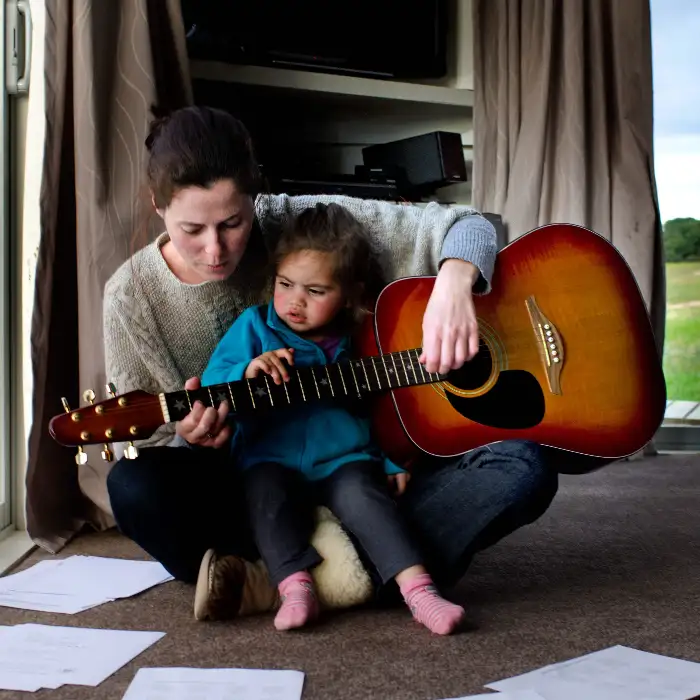
Lullabies
Lullabies are soothing and gentle and are often connected to culture and tradition. Rocking baby to sleep with song is a gentle way to provide reassurance and teach empathy as baby learns through repetition, story, language and rhythm.
Why do it?
- Lullabies and Oriori are traditional to most cultures. They’re a way of passing on beliefs and knowledge.
- Baby knows your voice and will be soothed and reassured by hearing you sing or hum.
- Singing to baby helps them to learn language.
- If you sing and rock or sway with baby in your arms, they may be reminded of the time before birth. This will introduce baby to rhythm and dance.
How to do it
- A lullaby is supposed to be soothing, so choose a song that is not too ‘interesting’.
- A helpful formula is ‘repeat to soothe’ — so be ready to sing the lullaby over and over, getting slower and softer.
- If you sang to baby before they were born, that might be the best song to sing, as baby is already familiar with it.
- ‘Moe moe pēpi’ is in Whakatipu booklet Te Pihinga 1 (page 9), and you can hear it on the Whakatipu page of the Tākai website too.
- If your whānau has a traditional lullaby/ oriori , that would be wonderful for baby to hear.
- Softly humming can work for some parents and babies.
- For more lullabies, visit the Bussongs website.(external link)
Using more reo Māori
| Te reo Māori | English |
|---|---|
| Waiata mai | Sing to me |
| Waiata ā-ringa | Action songs |
| Menemene | Smile |
| Pakipaki | Clap |
| E oho | Wake up |
| Haramai, e te tau | Come here, my darling |
| Tō ātaahua hoki! | You’re so beautiful |
| Kua oho mai koe | You’re awake |
| Kaua e tangi, e te tau | Don’t cry my darling |
| Ka mirimiri au i tō tuarā | I’ll rub your back |
| Me moe koe. | You should go to sleep |
| Takoto | Lie down |
| Turituri tō waha | Be quiet |
| Katia mai ō karu | Close your eyes |
| Homai he kihi | Give me a kiss |
| Homai he awhi | Give me a cuddle |
| Moemoeā | Dream |
| Moenga | Bed |











